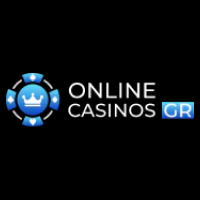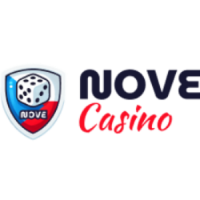In an era where every second counts, mastering lead response timing management is crucial for businesses aiming to enhance their sales and marketing synergy. This article delves into the intricacies of lead response timing, offering valuable insights and data-driven strategies to optimize contact and qualification rates.
We will explore a comprehensive study, backed by rigorous research, providing actionable guidelines for businesses looking to improve their lead management processes.
The Lead Response Management Study Overview
This comprehensive study, building on the foundational insights of the Lead Response Management Survey, aims to bridge the gap between marketing and sales through a data-driven approach. Collaborating with Professor Oldroyd from MIT, this research was meticulously crafted to ascertain the optimal timing for reaching out to web-generated leads, focusing on key metrics like the day of the week, time of day, and response intervals.
Utilizing the robust dataset from InsideSales.com, which integrates quantitative call data with qualitative lead process insights, this study provides a unique perspective on lead management. We scrutinized three years of data from six diverse companies, analyzing over fifteen thousand leads and more than a hundred thousand call attempts.
This research focuses on a pivotal question: “When should companies initiate contact with web-generated leads for the best contact and qualification outcomes?”
To bring clarity and precision to our findings, we established a set of definitions and terms, presented in a table format for ease of understanding:
| Term | Definition |
| Lead Created Time | The exact moment a potential customer completes and submits a web form. |
| First Dial Attempt Time | When a sales or lead qualification representative first tries to reach the lead. |
| First Contact Time | The initial successful communication between a representative and the lead. |
| First Qualification Time | When a lead progresses to a stage ready for active sales engagement. |
| Call/Dial | The act of reaching out to a lead via phone. |
| Contact | A successful call that results in a conversation of a predetermined duration. |
| Qualify | The stage where a lead shows willingness to enter the sales funnel is often marked by scheduling a meeting with a sales representative. |
LRM Study Summary
This behavioral study unearthed key findings about the effectiveness of call timings on web-generated leads. Focusing on leads obtained through web forms and contacted at least once, the study revealed intriguing patterns:
-
Best Days for Contact: Wednesday and Thursday emerged as the most effective days for initiating contact (49.7% more effective than the least productive day) and qualifying leads (24.9% more effective);
-
Optimal Time Blocks: Calling between 4 to 6 PM maximized contact chances (114% more effective than the least effective time). The 8-9 AM and 4-5 PM intervals were prime for qualifying leads, showing a 164% improvement over the least effective time (1-2 PM);
- Response Decay: The likelihood of successfully contacting a lead drops dramatically after the first hour, with a 10-fold decrease. Similarly, the odds of qualifying a lead fall by over six times in the same period. Notably, after 20 hours, additional call attempts negatively impact the chances of making a successful contact.
These findings underscore the critical nature of timing in lead response management, offering concrete, data-backed guidelines for businesses to refine their strategies and enhance their lead engagement processes.
LRM Study Details Expanded
I. Analysis of the Best Day of the Week for Lead Engagement:
The study meticulously explored whether certain weekdays yielded higher success in establishing contact and qualifying prospective customers. The findings are striking:
- Optimal Days for Initial Contact: Wednesdays and Thursdays emerged as the most effective days for initiating communication. Specifically, Thursdays showed a remarkable 49.7% improvement in contact rates compared to the least effective day, Tuesday;

- Days for Highest Qualification Success: Wednesdays and Thursdays again stood out, with Wednesday leading at 24.9% higher qualification rates than Friday, the least effective day;

- Thursday’s Unique Advantage: In terms of qualifying prospects, Thursday showed a significant edge, being 19.1% more effective than Friday;

- Patterns in Commitment and Qualification: It appears there’s a reluctance in commitment or qualification towards the weekend, with Friday showing lower qualification rates. Interestingly, Monday was consistently ineffective across all categories, while Friday was not as poor for establishing contact but lagged in qualification rates;
- Impact of Choosing the Right Day: The variance in success rates, ranging from 19.1% to 49.7%, highlights the importance of choosing the right day for lead engagement. This insight suggests a potential 50% increase in contact success by simply selecting the optimal day.
II. Identifying the Most Effective Time of Day:
The study further investigated if specific times of day influenced the success rates for contacting and qualifying leads, using the predefined terms for call attempts, contacts, and qualifications.
- Prime Time for Contact: The period from 4 to 6 PM proved to be the most effective for initiating contact, showing a 114% increase in success compared to the 11 AM to 12 PM timeframe;

- Optimal Times for Qualification: The hours from 8-9 AM and 4-5 PM were identified as the best for qualifying leads. Notably, the 8-9 AM slot was 164% more effective than the 1-2 PM post-lunch period;

- Best Time for Both Contact and Qualification: The 4-5 PM slot was particularly effective, with a 109% higher success rate in qualifying leads compared to the 11 AM to 12 PM slot;

- Avoiding Non-Standard Work Hours: The study intentionally excluded the early morning (7-8 AM) and post-6 PM times as they fall outside typical business hours;
Response Time Analysis by Hours:
This aspect of the study revealed the crucial impact of response time on contacting and qualifying leads, overshadowing both the day of the week and the time of day in significance.
- Dramatic Decrease in Success with Delayed Response: The probability of successfully contacting and qualifying leads plummeted if there was a delay of just one hour in response;

Contact success dropped more than tenfold, while qualification success fell over sixfold in the first hour;

- Counterproductive Efforts After 20 Hours: Surprisingly, the data indicated that attempts to contact leads after 20 hours could be detrimental, potentially reducing the chances of successful engagement;

- Reconsidering Strategies After 20 Hours: This insight raises questions about the effectiveness of persistent calling and whether alternative methods, such as digital communication, might be more fruitful after this period;
- Realistic Application of Findings: Although the data suggests ceasing attempts after 20 hours, the practicality of this approach in a high-volume lead environment remains a topic for further exploration.
In conclusion, these expanded insights into lead response timing management reveal profound implications for sales strategies, emphasizing the criticality of timely and well-planned engagement with potential customers.
III. In-Depth Analysis of Response Time in 5-Minute Increments:
Delving deeper into the critical early hours of the lead response, this study section focused on the first three hours, examining response effectiveness in 5-minute segments. This granularity in analysis yielded some striking revelations:
- Rapid Decline in Contact Success: The likelihood of successfully contacting a prospective customer plummets dramatically within the first hour, decreasing more than tenfold.;

- Steep Drop in Qualification Ratios: The study found a staggering 21-fold decrease in the odds of qualifying a prospect if the response time stretched from 5 to 30 minutes. Even more startling, the chances of qualification dropped fourfold between 5 and 10 minutes;

- Impact on Lead Value and Sales Revenue: These figures pose critical questions about the intrinsic value of a lead and its potential revenue impact. A 100-fold increase in contact ratios and a 21-fold increase in qualification dramatically influence a company’s sales performance;
- Practical Application and Industry Insights: To validate these insights, the study conducted real-world tests within the mortgage and insurance sectors, which heavily utilize lead response management solutions.
Case Studies:
- Mortgage Industry Test: When testing with a leading mortgage lead provider:
- The president of the study group received seven calls after requesting mortgage quotes;
- The first response arrived in just 30 minutes, while the last took three days, highlighting the diminishing odds of qualification over time;
- Insurance Industry Test: In trials with top health insurance lead providers:
- The Sales Manager, submitting a request at 4 PM (optimal time based on the study), received no calls on the same day, with the first call coming at noon the next day;
- Sales representatives had varied experiences based on the time they submitted their requests, illustrating the significant impact of response time on the likelihood of successful engagement.
Partners
We Сooperate With the Best Brands

OnlineCasinosGR.com is a trusted review platform dedicated to helping players find the best Greece online casino sites. With in-depth reviews, expert ratings, and up-to-date bonus information, the site guides users to safe and reliable online gambling options in Greece.

Features of slot machines in the famous club Ice casino
 If you’re searching for an online casino platform with lots of promotions and bonus offers for their players, then be sure that 4rabet online casino is the perfect and ideal online casino platform for you and your friends.
If you’re searching for an online casino platform with lots of promotions and bonus offers for their players, then be sure that 4rabet online casino is the perfect and ideal online casino platform for you and your friends.
![]()
If you trade crypto, make sure to pick the best crypto exchange in Canada
 Download Images Watermark Remover software for softorbits.net software company website. It allows you remove watermark from your photos and erase unwanted object from image.
Download Images Watermark Remover software for softorbits.net software company website. It allows you remove watermark from your photos and erase unwanted object from image.
 Check all the best casino promotions on Slotozilla PL. You can activate a bonus easily by following Slotozilla instructions.
Check all the best casino promotions on Slotozilla PL. You can activate a bonus easily by following Slotozilla instructions.
 Explore Fortune Tiger the top crash game, at fortunetiger.com.br for unmatched excitement and wins.
Explore Fortune Tiger the top crash game, at fortunetiger.com.br for unmatched excitement and wins.

Tips.gg, a sports analytics and predictions company, leveraged a lead generation course to acquire valuable insights and strategies on attracting new customers. Through the course, they honed their skills and implemented effective techniques, resulting in a substantial increase in their customer base.

Best offshore hosting – dedicated servers, VPS, shared hosting & cloud solutions in two offshore datacenters located in Kyiv & Amsterdam.
 Martin Casino is a top-rated online casino known for its generous bonuses and wide selection of high-quality games. Players choose it for its fast payouts, excellent customer support, and trusted reputation in the gaming community.
Martin Casino is a top-rated online casino known for its generous bonuses and wide selection of high-quality games. Players choose it for its fast payouts, excellent customer support, and trusted reputation in the gaming community.
 Don’t know which is the best Czech casino to choose? Novecasino.net is here to help you! Author reviews, ratings of the best casinos and 60+ unique casino bonuses in Czech Republic! Look for Nove ceske online casino on their website novecasino.net!
Don’t know which is the best Czech casino to choose? Novecasino.net is here to help you! Author reviews, ratings of the best casinos and 60+ unique casino bonuses in Czech Republic! Look for Nove ceske online casino on their website novecasino.net!
 Enjoy the flexibility of playing at https://casino-utan-svensk-licens.info/casino-utan-svensk-licens-10-euro/ with a low €10 deposit, perfect for exploring new games.
Enjoy the flexibility of playing at https://casino-utan-svensk-licens.info/casino-utan-svensk-licens-10-euro/ with a low €10 deposit, perfect for exploring new games.
 BetFury is a leading Bitcoin gambling site offering exciting games and rewarding bonuses. Try your luck and win crypto prizes today!
BetFury is a leading Bitcoin gambling site offering exciting games and rewarding bonuses. Try your luck and win crypto prizes today!
 Get ready to take off with the new Lucky Jet game! This cutting-edge money game is a hit at 1win online casino – one of the top casinos on the web. Win big with just a few seconds of playtime and your reaction speed. Your prize amount depends entirely on how lucky you feel and how bravely you gamble! Try it out now — who knows, you could end up soaring with massive payouts!
Get ready to take off with the new Lucky Jet game! This cutting-edge money game is a hit at 1win online casino – one of the top casinos on the web. Win big with just a few seconds of playtime and your reaction speed. Your prize amount depends entirely on how lucky you feel and how bravely you gamble! Try it out now — who knows, you could end up soaring with massive payouts!
 Looking for Online Casino Free Spins from Casinos? Visit our site and find most suitable bonus codes fou you!
Looking for Online Casino Free Spins from Casinos? Visit our site and find most suitable bonus codes fou you!
 Link building is the practice of acquiring links to your website from other websites. In SEO, these links are called backlinks, and the Editorial.Link company helps to acquire only the most authoritative links: Saas blogs, service, or production companies.
Link building is the practice of acquiring links to your website from other websites. In SEO, these links are called backlinks, and the Editorial.Link company helps to acquire only the most authoritative links: Saas blogs, service, or production companies.
 Seeking a trustworthy betting platform? Explore 1win for competitive odds, generous bonuses, and exciting promotions. Its intuitive interface ensures a seamless betting experience.
Seeking a trustworthy betting platform? Explore 1win for competitive odds, generous bonuses, and exciting promotions. Its intuitive interface ensures a seamless betting experience.

Want to find legal online gambling South Africa? CasinoHEX team is here to help!

Only real no verification casinos on casino-howto.com


